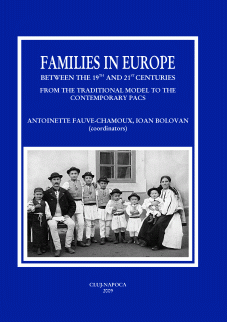Marriage Customs and Household Structure in Hungary at the end of the 18th Century. The Case of County Pest-Pilis-Solt (1774–1785)1
Marriage Customs and Household Structure in Hungary at the end of the 18th Century. The Case of County Pest-Pilis-Solt (1774–1785)1
Author(s): Péter ŐriSubject(s): History
Published by: Centrul de Studiere a Populaţiei
Keywords: 18th Century Hungary; age at first marriage; household structure; patterns of marriage and household formation; Hajnal model
Summary/Abstract: The paper tries to examine the validity of the strongly discussed Hajnal model of marriage customs and household formation using data at the settlement level of a Hungarian county (Pest-Pilis-Solt) at the end of the 18th Century. First it focuses on the problem of household structure then deals with marriage customs and household structure as the elements of a complex system. At that point it analyses the most important model composing elements of the Hajnal model: age at first marriage, the proportion of the servants in the households, and household structure (number of married men per household). It examines these factors together by the help of hierarchical cluster-analysis, regarding the clusters of settlement as the basic types of marriage customs and household formation. The results suggest that the simplified dichotomous model of European marriage pattern is not acceptable though the fact of relatively early marriage can be easily proved. On one hand, the country was home to both ‘Eastern’ and ‘Western’ populations and models of marriage and household formation. On the other hand, there was a number of transitory types between the two models, the ethno-cultural interpretation of which is not fully satisfactory either. While the 18th and 19th Century migration mixed different ethnicities, different ethnic groups could behave similarly and smaller or larger variance can be observed within one or another group too. In addition, marriage and household patterns were significantly influenced by other factors, such as settlement type, migration, labour-force demand, social and economic conditions, local traditions.
Journal: Romanian Journal of Population Studies
- Issue Year: 3/2009
- Issue No: Supplement
- Page Range: 167-192
- Page Count: 25
- Language: English
- Content File-PDF

